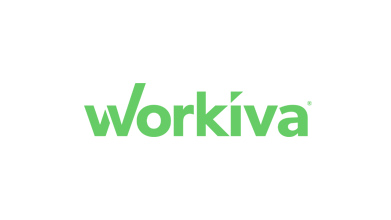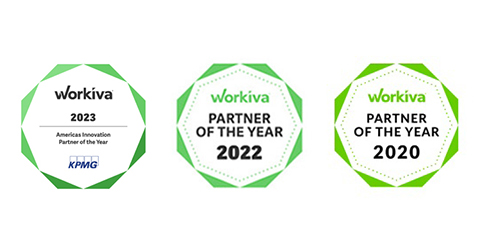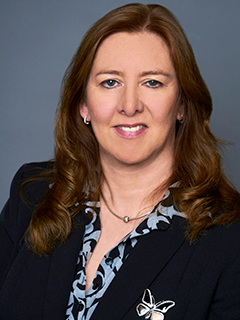Transcript
Mandi McReynolds
Hello and welcome to ESG Talk your go to source for environment, social and governance leaders. I'm your host, Mandi McReynolds, KPMG recently put out an announcement about their approach to integrating technology and technology partners for environment, social and governance. And within that partnership they included Workiva and Microsoft. We thought it would be fun to bring to you, our viewers today a show about technology and about the challenges and how we would consider approaching them as our three organizations. I'm joined today by Maura Hodge. Maura is from KPMG. She is an ESG audit leader. I've had the privilege to be with her on other panels, and I'm delighted for you to hear her expertise because she is the firm's national leader around measurement, reporting assurance and how to develop this approach within the United States. You may remember from season one, Rob Fisher. Rob Fisher was also on from KPMG. And I really encourage you to go back and listen to one of these early season one episodes. It was one of our top performing episodes from season one. Next, we have Neetha Ravikumar from Microsoft. She is the global director within Microsoft's partner organization, focusing on ESG relationships with different firms and advisory and global systems. Welcome, Maura and Neetha to the show. Now, to kick us off, we'd like to start with a question for both of you. Let's start with you, Neetha, In your experience, regardless of where the company is on its ESG journey, I'm curious, what do you think some of the biggest challenges they face, particularly as they work towards regulation, as it relates to CSRD and the SEC climate disclosure ruling?
Neetha Ravikumar
In my past life as an engineer, when I used to have clients with their emissions inventories and these inventories were supposed to be submitted to regulatory bodies. I remember combing through a wide variety of data sources from emails to Excel files stored on local servers at planned locations to bill of material sitting in the procurement department. And the truth is that this is still the case with majority of companies that undertake the reporting exercise every single year, a very heavily manual exercise. So limiting manual interactions to preserve the data integrity and generating an auditable data trail. And also automation of this data feed. These three are very critical to obtaining near real time insights so they can take adequate efforts to reduce their carbon footprint versus wait for a completed. The analogy I like to use here is that a financial accounting trade, thanks to the ERP systems, we're able to track performance in real time and make necessary changes in business operations to attain the set performance targets. When was the last time we all got paid? A year later, because our systems were not updating, right. So ESG data is critical business data that provides visibility into both risks and business opportunities. So the same level of rigor is necessary when it comes to ESG data and reporting as well.
Mandi McReynolds
Maura I'm curious some of your perspective, as you heard some Neetha's points. What do you think from from sitting where you are at KPMG?
Maura Hodge
So I absolutely agree that data is king and it is also the biggest challenge to address. But I think that to drill down on that a little bit and to maybe put a finer point on it. One of the big issues is, especially with all of the different standards and regulations coming out, SEC, CSR, IASB.
If we only focus on greenhouse gas inventories and emissions footprints, there are actually differences in those three standards in terms of what that data should reflect. And so there is the potential risk that similar to financial reporting, we end up with three different sets of ledgers. If a company has to report against the three different standards. So that's something we're keeping a close eye on and something that we need to keep in mind as we're building out the systems and looking to collect that data. Just another quick area or anecdote that that we've been watching is the timing of information received from third parties. So NEPA had mentioned, you know, getting information via email or from all these other places. And a lot of times it's coming from a utility provider because you're waiting for an electricity invoice or a natural gas invoice. Sometimes you don't get them from the provider for several months or you're just not able to collect them from the field. And that causes delays in reporting. So that's kind of a common one that we often hear about. But as I'm looking more into some of the social data and some of the supply chain, other supply chain challenges, you can think about maybe some eco products like a sustainable T-shirt, let's say, and companies are making claims that that T-shirt is is made from cotton that's been certified by the Better Cotton Initiative, or that it's organic in some way. And there can be a time lag between the time that that certification occurred when the cotton was actually sourced from the fields and ultimately gets to the company and manufactured and put into the factory. So we're kind of wrestling with some of those challenges as well. In terms of how often do you get that certification and how do you know that the fibers that are used in your products are actually certified as sustainable, such that you can support that eco label on your products?
Mandi McReynolds
In a LinkedIn post you called Scope three, the Ultimate decarbonization Challenge. As you mentioned it, it requires co evaluation of commercial technology, like you just talked about policy practice, which I think sometimes gets forgotten in the mix. So let's unpack that a little bit more. And and how do you see those challenges and topics relating to the impact of ESG reporting as a whole?
Neetha Ravikumar
Yeah, so that is correct. More than 96% of Microsoft's emissions in 2022 were from scope three. And how we approaches that are two prongs to this. One is just the pure data visibility for all three, and that is extremely necessary to make sure that you can undertake meaningful reduction activities. And on the other hand, you've got all the suppliers, both upstream and downstream, that you need to work with. And how we do it at Microsoft here is we work through our supplier code of conduct where we have set expectations for our suppliers to reduce their carbon emissions by 55% by 2030 and this doesn't mean just setting a mandate and asking everybody to comply. This is really about engaging with our top suppliers and make them understand how to identify hotspots, for example, right from equipment and the confidence that go into our equipment with the building materials that we procure. We work with our suppliers to identify those sustainable materials to run trials on different cement mixes that we can use that would reduce the overall embodied carbon in building materials. And second, we actually work with our transportation logistics ecosystem. In 2022, we actually moved our cargo from much higher carbon intensive modes to lower carbon intensive modes, and we saw a 20,000 metric tons of CO2 reduction. So these efforts required engagement with the supply chain.
Mandi McReynolds
I value that we both open up very transparently with the challenges that we are facing in the market. And how we move forward. In truth is we have to acknowledge that emerging regulation and reporting for ESG is really a sore spot, even for the most seasoned leaders. And the examples that you gave really highlight that. Maura, I want to turn it to you again. You know, I read this article that you wrote for CFO magazine in which you stated for KPMG you view maturity of an ESG strategy and maturity of the ESG reporting as key drivers to assembling the right ESG team. Could you unpack, pack that or break it down for our listeners a little bit more?
Maura Hodge
Sure. I've been wrestling with how and where these things intersect and where they work together. And the best analogy that we came up with as a team was really like the London Underground subway map or, you know, and in Boston. So kind of a team map where you have all of these lines, some of which are running in parallel, but then often intersect at different points on the line so that people can get on and off.
Maura Hodge
And I see ESG in approaching reporting and strategy in that way as well. So you kind of have a through line around reporting. Everybody has to do reporting. There's a big focus on transparency. That's what a lot of the regulations are requiring that we're looking at today. But you're only doing reporting on your strategy and the ways that you're implementing and taking action around these different topics, whether it's climate change or diversity and inclusion or cybersecurity or whatever ESG topic you might be talking about.
Maura Hodge
And so when I look at it, I think, okay, you need to have that underlying strategy in place, understand what topics you're going to tackle, what what you're going to measure in order to track your progress, what actions you're going to take. And then you know that that output the the analysis of what's actually happened in in all of those pieces and components they integrate into your reporting. So your reporting really should be reflecting what you're doing and what you've done. Not have them be completely separate. And so when we look at the reporting, the thing that gets a little bit more complex is now that we have regulation in place, there is other disclosures or specific ways that the information needs to be presented. And so there's a bit of a work that we need to do to integrate that, to understand how they work together, where those points of overlap are so that we are moving forward together as one, and that then in turn kind of develops and helps drive what your team should look like. So in that article, we look at it as a 4x4 matrix where you're thinking about the maturity of your ESG reporting you may have been reporting for a decade or you may just be starting right? And then the maturity of your ESG strategy. So again, maybe you haven't actually set a science based target or haven't necessarily been doing anything around climate change or you have done all of those things and you're well on your way to being net zero by 2030. And so depending on where you land in those quadrants, the strength of the people on your team, you know, that currently exist maybe in different places. And then what you need to recruit and maybe in different places in order to take you to those maturity levels that you need to reach.
Mandi McReynolds
All right. And your CFO article, you talked about this being an uncharted territory and Workiva, KPMG and Microsoft, together, we released an approach to how to think about this process in this framework to build that quality and digestible information. So how do you envision companies building the comprehensive data program to stay on top of this in this untarnished territory?
Maura Hodge
I think the first thing is to focus. I think that it is so easy to be overwhelmed. Feel like you're out to sea, right, with just waves of information coming at you. So much data, so many requirements, and not even really knowing where to start. And so one of the things that we've done at KPMG, we kind of affectionately call it our Rosetta Stone, but we've taken all of the regulation that's been proposed out there as well as a number of public data sources of ESG information, plus some of the voluntary frameworks and standards, and broke it down into all of their components and disclosure requirements, data metric requirements. We came up with about 14,000 line items in doing that process. And so it's not surprising everybody feels overwhelmed. But what we saw and what I've seen in doing this work over over the past ten years is that a lot of that information really can be broken down into its data element and really the source where that data element can come from. So just as an example, we talk about scope, electricity information, right, or scope to data. And often all of these different standards and frameworks will ask for the energy consumed. Maybe it's in metric tons, maybe it's in kilowatt hours. They're asking for your scope to greenhouse gas emissions and then maybe an intensity factor. So you scope to greenhouse gases divide it by revenues or divide it by headcount. And yes, those are three different numbers. They're three different products, but they all come from your consumption information with maybe some other inputs and calculations to them. Similarly, when you're doing intensity factors and you're always using revenue from, you know, your audited financial information or you're always using the same headcount that maybe should match to your diversity, equity and inclusion information, right? You start to see patterns of data elements and where that information can come from. Today, we often see that that data is sourced from 3 to 5 different places. So going back to Nathan's example of going through emails, the person responsible for reporting intensity of carbon emissions versus the person that's sitting over in h.r. Reporting on your DNI information are different. And so they often pull different reports or they ask different people for that same underlying information. And so it's a problem for quality as well as for efficiency. And so the number one step that we're trying to get to with our clients is really how do we narrow that playing field of 14,000 metric and pieces of information that are being required down to we've gotten it down to about 250. And there's obviously a lot of nuance and a lot of complexity within that that you really have to kind of dig a little bit deeper, but at least it gives you a much smaller scope to start to work on. And then you can kind of work on prioritizing. So that would be my number one thing is, is prioritize what you're doing, the number to really understand some of the details. And this is where I think historically sustainability information has been like, it feels right because we're talking about impact. And so we're just going to go with that. And as we move into a world where there is regulation and scrutiny from investors, that's much more like financial information. We can't act to that way anymore. And so there is a huge focus on reading the standards, understanding the criteria and the definitions, and making sure you're aligning with all of those things and bringing the disclosure around it. And I think the last thing that I would just note in terms of approach is, you know, we go through kind of a precious process with our clients to help understand, okay, do you have the information that you need available for an auditor to look at it? Does it work in the way that it's supposed to work either against the standard or your own internally developed criteria? And do you have controls over that information in order to feel good about how it's being calculated and that it's coming out consistently accurate? Every single time? And so walking through those different areas and making sure clients are ready for that next level of rigor is what we're spending some time doing now.
Mandi McReynolds
Neetha, I think it's important for us to to recognize there's challenges and there is successes. So Microsoft just published its latest sustainability report. Congratulations. I know that is a big feat to get it out the door and published and it touches on scope one, two and three data. And what role did technology play in helping your company and a company as large as Microsoft manage the report Data and the report itself to build that efficiency and accuracy?
Neetha Ravikumar
Yeah, I would say it's critical. Critical role is what technology plays and really setting up that continuous feedback loop of data and insights, because here you are pulling very critical business data and you want to be able to make meaningful decisions based on that data. And so it was back in 2009 when we first set our carbon reduction goal and three years later in 2012, we were 100% carbon neutral. And in 2020 we set more ambitious net zero targets. And year over year we've been sharing our progress towards those net zero goals. And this has been a journey, a journey with lots of learnings, as we call it, and a journey where technology has played a very critical role and we as a technology company sought out our own technology to help establish better systems and processes that would not only help us gather high quality data, but also make sure that the data is verifiable. And we've had that assurance done for our ESG report that we put out, and we rely on this data to make meaningful decisions, be it moving our focus on different business functions to, you know, data center operations to campus facilities. So technology has played a very significant role. And I also want to call out common data models. The data model is becomes that central nervous system of sorts because everybody is communicating data in different terms that is, you know, different attributes being shared. So having that consistent data model that you can share with your upstream and downstream of the supply chain with every single business function really helps set that minimum data quality that you need, all of the fields that you need to be gathering. So from data model to building out an ERP type of system, it has been a journey for sure.
Mandi McReynolds
So as we continue on that, that high and that positive note, I'm curious if both of you can close this out with something that our listeners should walk away thinking about more. So more what what can companies do to be more transparent? What's something else? Building on what Neetha just shared that you can end us with?
Maura Hodge
Sure. I mean, I think knowledge is power, right? And the data that is now being collected and rigorously assessed is is really key. And so I think having that at your fingertips and then being able to analyze it and utilize it to impact and influence almost in a real time way, you know, the actions that you're taking to reduce our carbon footprint or to, you know, make those positive changes is really key. And I think the other thing that I would say that we talk a lot about, I mean, with my auditor hat on, everybody looks at me and thinks that I'm the compliance police. But the reality is that ESG is here to help drive value for your organization. And there are so many other places that you can be focused on and use that data to help create that value. So one, you know, we're seeing it being written into debt agreements and reducing the the percentage of interest that is associated with it when you meet your goals and targets. But you can't prove you've met those goals and targets unless you're collecting that information. We see a lot of tax incentives coming into play now. And so having the opportunity to take advantage of that, to power your programs and power the investments that you're making to make that difference is going to be, I think, really transformational in the next 5 to 10 years.
Neetha Ravikumar
I agree with Maura 100%. And the fact that ESG data is business critical data, and that is a key value driver. I mean, look how COVID impacted supply chains and internal business performance and ESG data is very much in that same vein. Providing us a window into business risks and opportunities on how customers involved have evolved their decision making and continue to evolve their decision making. So as you balance your suppliers and customers, ESG data is very critical and of high value that you can bank on to make those right decisions to ensure that you minimize your business risk, that all the floods and forest fires disrupting supply chains and priorities, the customer decision making. So in this complex world of challenges and new variables that are going to emerge due to climate change, this would be the data that companies want to make sure you know, is coming from the right source is bankable so that they can make the right business performance decisions.
Mandi McReynolds
I love ending on both of those notes. Looking at decision useful trusted data that can add the value creation we all crave. Thank you so much for joining us today and to our audience, thank you for joining us for another episode of ESG talk brought to you by Kiva, the world's only unifying platform for financial reporting, ESG audit and risk.
If you enjoyed this episode, please rate or reviews on Apple Podcasts and subscribe to see future episodes on Apple, Spotify, or YouTube. We'll talk real soon.

















